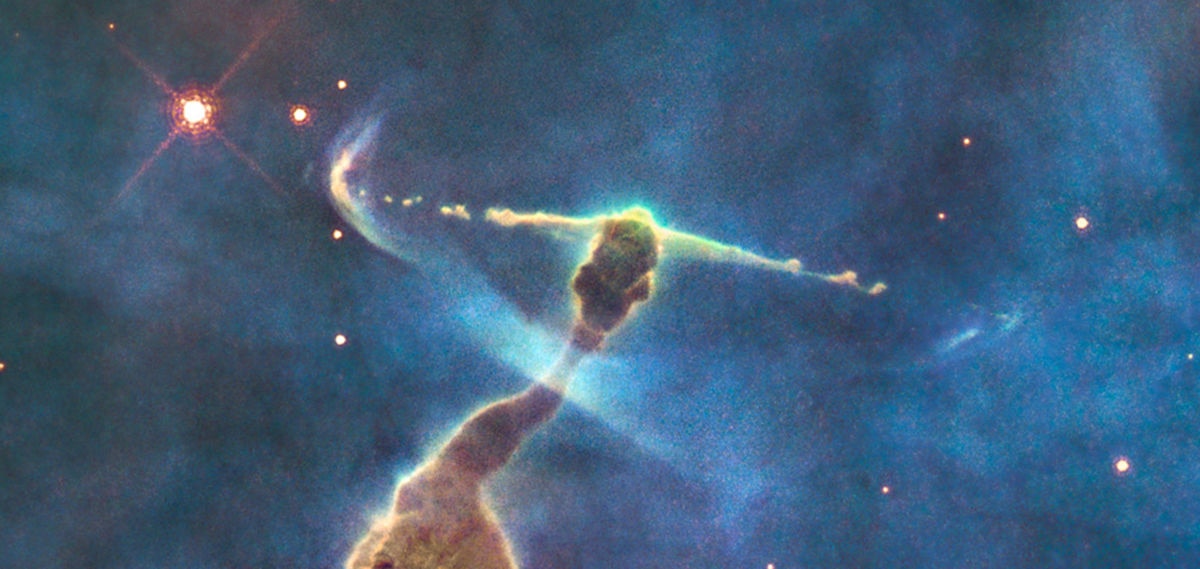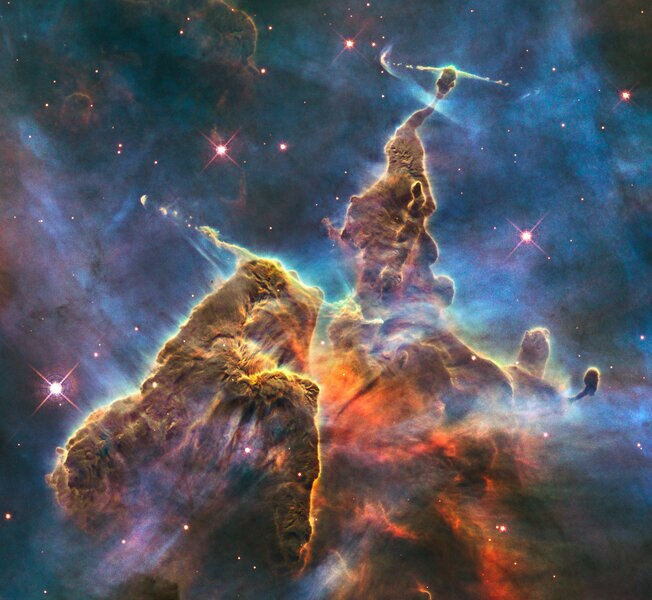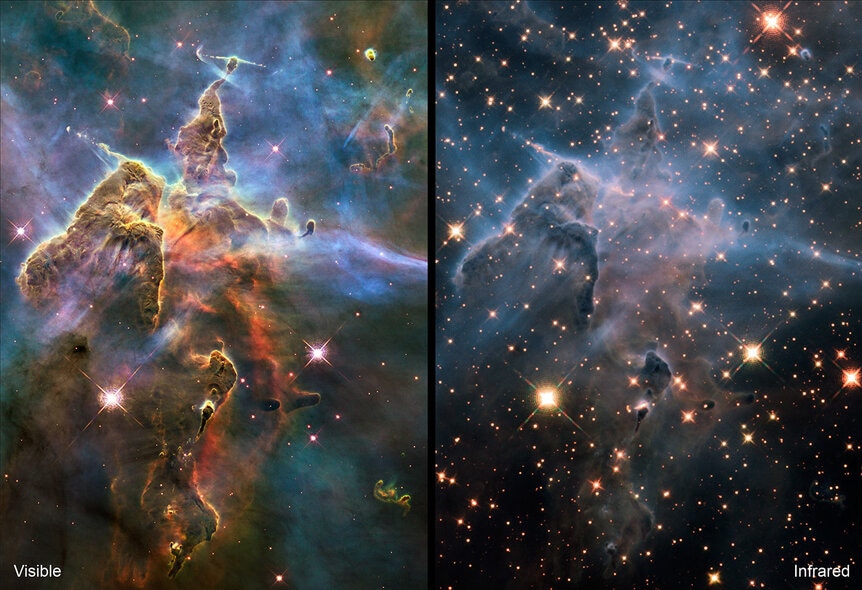Create a free profile to get unlimited access to exclusive videos, sweepstakes, and more!
Hubble celebrates 20 years in space with a jaw-dropper

I was out of town at a wedding this weekend, so I missed blogging about the spectacular image release for the Hubble Space Telescope's 20th anniversary (here's the US site). And yikes, it's simply mind-smackingly mind smacking. Behold:
Ye gods. Click to get access to massively embiggened versions.
This is a stunning close-up of a section of the vast Carina Nebula, a sprawling and complex Escher-like region of gas and dust about 7500 light years away. It's the scene of chaotic star birth and death, slammed and reslammed by winds from stars being born and others busy blowing up. In this image -- which is only a part of the full view of this magnificent vista -- the tentacles of dust tower light-years in length, and at the tips of those fingers are stars that are just now forming. The material around them is thicker than what surrounds it, and can partially withstand the onslaught of subatomic particles and fierce ultraviolet being blasted about by hot, young, massive stars nearby, off the top of the image. This wind and light blow away the lighter material, leaving behind these structures that are essentially sandbars in space, material protected by the denser gas and dust at the tips.
All along the sides of the towers you can see streamers of material, filleted tenuous wisps that appear to be flowing from the towers themselves. But, in fact, this is matter flooding past the towers, gas slamming into and screaming around them. Look around the image and you can see the shock waves, the tremendous forces at play here. To give you a grasp of this, the battle ground for this action is tens of trillions of kilometers across, and the material is moving at a million kilometers per hour.
This is sculpting on a scale that would make Zeus cower in fear. But Nature does it as a matter of course.
And the forces at work here are capable of beauty and incredible detail. For example, cast your eyes upon this feature located at the tip of the uppermost trunk:
This is my favorite part of the image, and not just because it looks like an angry gray alien (though admittedly that does add a bit of cool). The reason I love it (and the other one located at the tip of the fatter tower to the lower left) are the twin beams of material coming out of either side of it. Those jets of matter are caused by the forming star at the center; the star is being born in the center of a flattened disk called an accretion disk. Complex magnetic fields are at play here, and they cause the gas in the disk to be propelled away, up and out from the star's poles, at high speed. Note the beautiful sculpted shock wave at the left end of the jet as it plows into the dense material in the nebula itself. We see lots of these paired jets -- called Herbig-Haro Objects -- and they mark the positions of new stars. Our Sun may have looked a lot like this about 4.6 billion years ago.
Now let's take a step back. Here's a fascinating look at this scene, comparing the view in visible light to that of infrared:
Note that in the left (visible) image, you don't see very many stars. The dust is thick in Carina, and that blocks the light from the stars. But in the IR (right), the light can pass through the dust and we see many more stars. A lot of the detail in the towers disappears because the pillars are transparent in IR, so we lose that part of the picture. In the visible, the colors represent light from glowing oxygen (blue), hydrogen and nitrogen (green), and sulfur (red). These are not necessarily the most abundant elements in the gas (well, hydrogen is), but they tend to glow the brightest and are easiest to see.
So this is more than just (just! ha!) a beautiful image. The multi-color versions of it tell us the temperature, the density, and the elemental composition of the gas and dust as well. By examining clouds like this one, we learn about the vast and subtle processes that take place when stars are born en masse.
There is so much to see here that I could go on for quite some time about it. But I think I'll just leave it here. Go and download the hi-res versions of these images and simply play with them. Have fun, and keep in mind that what you are seeing here was unimaginable just a few decades ago. The things we can do now...
You can read more about Hubble's 20th anniversary at NASA's special page.





























